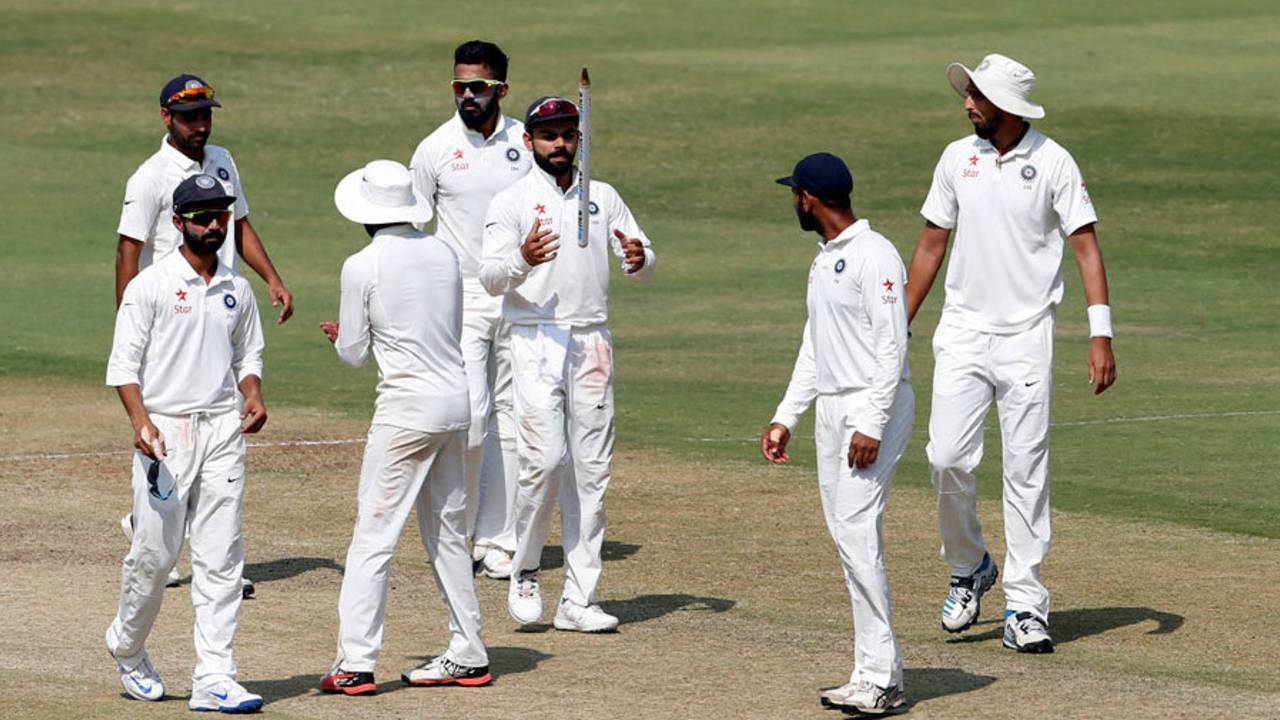A possibly unforeseen event occurred to end the
Hyderabad Test, as far as DRS is concerned. Because it brought India an expected victory, the review to bring about the last dismissal - with almost a session still in India's hand to take that last wicket - didn't become the big controversy it might have been in tighter circumstances. In brief, India were allowed to review a not-out call on lbw after they had possibly seen the replay on the big screen or had at least had the opportunity for signals to be made from the change room.
The details of this play were not as straightforward. A really full ball from R Ashwin hit the pad of Taskin Ahmed and lobbed up. India went up immediately. It cannot be said whether they appealed for lbw or bat-pad catch, but it seemed like one of those plays where only bat can save the batsman from the lbw, in which case he is out caught anyway. Umpire Marais Erasmus, though, gave it another twist by going to the third umpire to check if there had been a bump ball.
The replays showed that the bat didn't even touch the ball. In fact it hit the ground, which might have given Erasmus the impression of an inside edge. However, the replays also showed this was a really good lbw call in this case. As soon as the big screen flashed not out, Kohli hit his left forearm with his right fist, initiating what turned out to be a successful review.
This was in clear contravention of 3.2 (d) of the DRS protocol: "No replays, either at normal speed or slow motion, should be shown on a big screen to spectators until either the next delivery has been bowled or the players have left the field."
Even if there are both an umpire review and a player review for the same delivery, the player review has to be made within "no more than a few seconds" of the ball becoming dead. The umpire preview precedes the player review in such instances but the request for the player review has to be made immediately. However, the DRS protocol as of now covers more for instances such as an lbw appeal and a subsequent run-out where the on-field umpire thinks one appeal should be turned down and is not in position to rule on the second. In such cases the fielding side has to review immediately against the not-out.
However, in this case, even though Kohli wanted to review immediately, even the umpire wanted to rule out as was evident from his going to the third umpire to check for a bump ball and a soft signal of out. So if Kohli was to review immediately, what was the review against?
DRS was first
trialled in 2008, and this is quite possibly the first time we have had such a situation. What's important in these unforeseen circumstances is that eventually the correct decision was made. What's more important is that an addition be made to the DRS protocol after discussions at the ICC cricket committee's meeting this May because not always will such a mix-up be so harmless.
The most practical solution for such cases is to check for all dismissals once the umpire review has been initiated. If the secondary mode of dismissal is lbw, as it was in this case, the umpire's call should depend on the original decision. In this case, for example, Erasmus had originally ruled that the batsman had hit the ball, which means that when the review is run for the lbw the original decision should considered to be not out.
